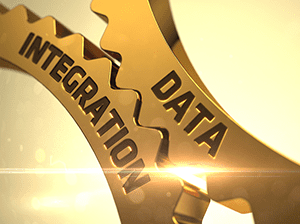Data integration refers to actions taken in creating consistent, quality, and usable data from one or more diverse data sets.
As technologies become more complex and change over time, data variety and volume grow exponentially and the speed of data transfer becomes ever shorter. Data integration has and will continue to become more critical to get meaningful results. Different approaches, tools, and solutions fall under the umbrella of data integration.
One well-known strategy is extract, transform, and load (ETL). In the end, data is ideally consolidated consistently with data integration, either in a physical or virtual form. The business context, the practices, and how data integration is executed all factor into its success.
Other Definitions of Data Integration Include:
- “A process of connecting to data sources, integrating data from various data sources, improving data quality, aggregating it and then storing it in staging data source or data marts or data warehouses for consumption of various business applications.” (Gartner IT Glossary)
- “Data shaped so that it is in the correct format with the correct piece of information to make sense.” (Ibrahim Surani)
- “Combining seemingly unlike sets of data into a searchable repository for new types if business queries.” (TechRepublic).
- The process of bringing all of the data together from disparate sources and into one centralized view (Forbes Communications Council)
Data Integration Use Cases Include:
- Data lakes
- Cloud migration
- Database transaction streaming: Allowing for filters and searches of historical data as real-time data streams into a system.
- Data extraction and loading from production sources. Loading revenue, supply or other operational data from systems like SAP or Oracle to mix with social media and clickstream for better analysis.
Consider using a data integration tool but choose carefully based on core business activities.
Businesses Use Data Integration to:
- Move data efficiently.
- Manage complexity and costs to do business with valuable data.
- Reduce potential support and staffing cost.
Image used under license from Shutterstock.com
